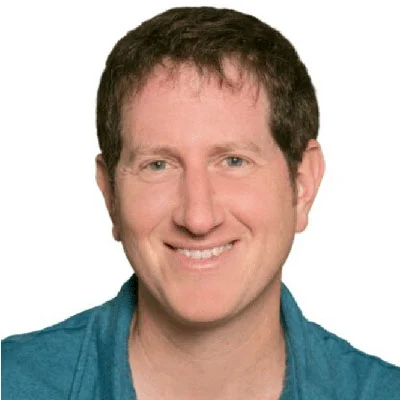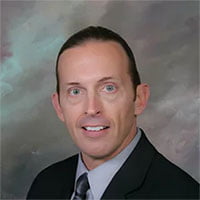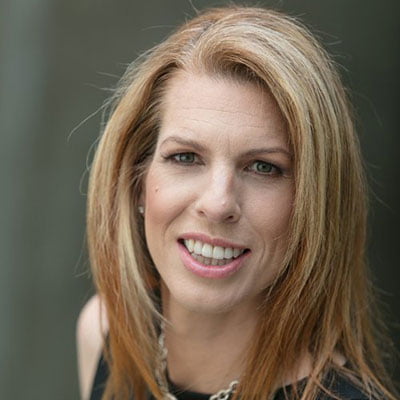Kevin Stafford 0:02
Hello, everyone, and welcome to another fine episode of the conversations with coaches podcast. I’m your host, Kevin. And I got to tell you after a whirlwind couple of months in January and February with episode after episode getting recorded, it’s kind of nice just to have a few weeks a few a week, time to talk to the coaches time to like talk before talk after. Today, I am delighted to have David Galloway back on the show. David was one of my first batch of guests when I first really took over the podcast hosting duties. And was one of the reasons I fell in love with it so quickly. Because precisely because of what you’re about to see here. It’s so easy and quick to get into the deep end media end of things. So, without further ado, let me introduce you to David, let’s go ahead and dive in. David’s success in business has been attributed to his ability to lead people towards the achievement of a common goal and such we talked about here a lot. David is currently the founder and CEO of terra firma leadership, where he pursues his passion for being a catalyst in the professional and personal development of everyone he interacts with. I in my limited exposure have found you to be a very giving human being a very giving soul and a delightful conversationalist. So David, I’m talking so much today. I’m sorry, I guess I had too much coffee. Thank you for being back on the show with me. Oh, it’s
David Galowich 1:17
pleasure. Thank you for having me back. Kevin, I enjoyed last time. And I’m looking forward to our conversation today.
Kevin Stafford 1:22
Excellent, excellent. Well, this is gonna start I guess we’ll start back with a small talk, I find it to be such a fruitful conversation starter just to talk about how 2023 has gone so far. Because I feel like for a lot of a lot of coaches in particular entrepreneurs or business owners, it’s been I mean, obviously times are tough in various ways. And we don’t have we had by no means need to dive into any like financial talk or politics, dog or pandemic talk or anything like that. I have the Silicon Valley Bank thing top of mind right now, as we’re recording this. That’s, that’s recent news. But how has your 2023 been? So far? I think when I first asked you this, you said it was a lot like 2022. And that that was a very good thing. So talk about that a little bit.
David Galowich 2:03
Yeah, I mean, at a macro level, it’s a lot like 2022. But it’s interesting that the nuances are really the interesting part. And 2023, at least from what I’m seeing a lot of my clients and I work with both individuals and teams, a lot of my clients are experiencing a lot of uncertainty right now. You know, the general economy seems to be clicking along despite the warning flags, despite inflation, despite interest rates, they not a lot of them have seen a real fall off in any of their businesses. But what they have is a lot of uncertainty because we’re in somewhat uncharted waters. So they’re trying to figure out how do they lead through that uncertainty.
Kevin Stafford 2:47
It’s really, uncertainty really is it feels like the word of a word of the moment, because there’s just so there are so many things that we have educated guesses on, that either aren’t really doing a great job of comforting us, or are at no matter how educated they are, don’t seem to be proving to be the case. And so there’s just this whole lot of like, you ask a really good question. And pretty quickly, you arrive at I’m not sure as an answer. And that’s like, when you get enough of those I’m not sure is that could be a really, those are really scary waters to navigate. And I was gonna say but but really, it’s an and, and that is such a, a key strength of good coaching is that you don’t eliminate uncertainty, that’s a fool’s errand. What you do is you teach and guide in the navigation of uncertainty, which by definition is uncertain.
David Galowich 3:38
Right, right. Yeah, no. And, you know, the the leaders that I really enjoy working with the most of the ones that are very quick to say, they’re not sure. Because the ones who have it all nailed down, and they’re positive way things are going or they’re, they’re bounded set on a path, they usually have some blind spots that they’re not acknowledging. And in those blind spots are some really great nuggets and some really great things they can learn and, and come up with, you know, the best path forward. So, I love your phrase, and I’m not sure and I what I like to do is get people to embrace that more. It’s perfectly okay to say, I don’t know, that’s a perfectly acceptable answer. And especially as a leader, to look at your team and say, you know, all of you are the subject matter experts in each of your departments and divisions. I need you to help us figure this out so that we get the complete picture. And so that I as the leader can make a decision. And that’s that’s where the secret sauce really hit us is having a leader that’s comfortable enough to say, I don’t know, I’m not sure.
Kevin Stafford 4:46
And still lead not to not absolutely, because a lot of people a lot of leaders will will accidentally conflate certainty with confidence. Like it’s they’re confident based on what they know what they can prove. or what they feel certain about. And that that informs their decision making in their leadership, when really, I think the strongest leadership is the ability to in that uncertain environment to embrace the uncertain nature to not just say, I don’t know, but try to figure out to have your attention and your intention on it, arrive at the decisions that you need to make decisions that need to be made by you, the leader in that position, acknowledge that you’re not sure. And that this is what I’ve decided to do. And I feel like it’s so it’s so difficult sometimes to remember that those are separate states of being that certainty. And that confidence, that confidence that’s required a leadership, certainty is not a requirement. Confidence is.
David Galowich 5:38
Right, right. And you know, and it’s not just the team leader, it’s anybody on the team, I think, should feel comfortable in saying, I don’t know, I need help. Yeah. And that is, that’s where you get the strongest team is where people are comfortable enough saying that to their teammates, and say, you know, I’m not sure what the right answer is, let’s unpack it, let’s figure out what the best path forward is. And that’s where you get the best results.
Kevin Stafford 6:07
And there’s, there’s a lot that goes into that, like, that’s sort of that that requirement to feel safe, saying, I don’t know, because there’s been, you know, there’s traditionally and probably just as a part of human nature, some hostility and some friction and some danger to admitting uncertainty. And having that be coded in some way shape, or form as a weakness or a vulnerability in the defined as a negative. Whereas I think vulnerability is I use that word, I hesitated over that word, because vulnerability I see as a positive now, but I didn’t always and not every environment is conducive to vulnerability. Some environments require you to be tough, I find myself drifting very often to the analogy of human skin. And the way it’s defined by both how permeable it is what it lets in, and also what it keeps out its protectiveness, and how I kind of strive to remember that in my interactions, to always make sure that I’m, you know, my pores are open, I’m letting in what needs to be lifted in order for me in the organisms I serve to, like, survive and thrive. But then I’m also protective and protecting and keeping safe, what needs to be kept safe and guarding what needs to be guarded. It’s a It’s not an either or it’s a both and, and so it’s you know, I find that I find that analogy of skin to be helpful to, to keep me from getting lost in that paradox, that seeming paradox.
David Galowich 7:26
Yeah, absolutely. Absolutely. And then I’ve also seen it where it’s not just the teams that have people that are comfortable saying, I’m not safe. I’m not sure. Some of the highest performing teams I’ve seen actually appoint someone to be meeting sometimes to be the contrarian. You know, if we’re all going on a path, we’re all nodding your head and agreeing we need someone to disagree to push us a little bit to make sure that we’re not missing something.
Kevin Stafford 7:53
Yeah, the what’s a devil’s advocate, as it’s sometimes been called, which is it’s a cheeky way to refer to it. But yes, I often find myself thinking in those terms, and I think of it, I’ve like, I should say it properly. I am teaching myself to think of it as an act of service and not just contrarian ism for contrary to some sake. Like it’s, I’ve, I’ve certainly dabbled in contrarian ism as a personality trait. I mean, I’m, I’m a Gen X kids, like, you know, I grew up in the 80s, and the 90s. And so there’s, there’s a certain certain element of just instinctive rebellion, or rejection of selling out all kinds of stuff like that, that we don’t have to unpack here, we don’t have the time and place for that. But um, that embracing of, of the taking the other side of things, even if I agree, even if I’m like in wholehearted agreement, just going through the exercise for myself, and for my team, of taking not just the other side, but an other side, kind of embracing that there might be not just one other, but maybe two other five other 10 other ways of looking at that at this, and giving it its due, will help at the very least, to illuminate more accurately, why we’re all agreeing with the thing we’re all agreeing with and why we’re all choosing to make this decision and go down this road together. I feel like it’s a it’s an act of service to yourself into the
David Galowich 9:12
Yeah, and then you know, another thing that’s important, though, if you’re, if you’re going to be the devil’s advocate, if you haven’t been appointed outright, to be the devil’s advocate, you need to ask the group for permission to be the devil’s advocate. Right? Otherwise, you’re going to show up and people are gonna wonder who’s this noxious person over in the corner? Just, you know, playing Doctor No. But yeah, so you know, make sure that you are on a level playing field with everybody that they understand, hey, can I have permission to be the contrarian here to be the devil’s advocate just to make sure that we’re not missing something? And then, you know, hopefully the group plays it out and they see all the different possibilities.
Kevin Stafford 9:51
It’s, I feel like I feel like every every time we come across another C word, I’m like, maybe it’s there’s a lot of alliteration going on because again, you’re highlighting without using the word itself. The foundational importance of communication, ask permission, speak, share, couldn’t communicate articulate to each other. Without that you really can’t, you can’t even begin.
David Galowich 10:10
You know, communication is the secret sauce to everything that you talked about, and probably most of your podcasts. Yep. We think about it. And Susan Scott wrote a wonderful book, fierce conversations. And in that book, she’s got a phrase, I’ll paraphrase it since I don’t have her language in front of me. But, you know, she said, every, every relationship is built one conversation at a time. And it’s not that any one conversation could change the course of a relationship that any one conversation could. And then you know, so to me, those are pretty wise words, you know, get Think About It doesn’t matter whether it’s with your work teammates, with your customers, with your family members, with your friends, all those relationships are built one conversation at a time. So that’s why in a lot of my coaching engagements, you know, I usually start the engagement with people talking about conversational style, and just what their default style is, and, and I try to give them a framework in which they can understand what other people’s styles may be, and how do they best engage with people in a way that resonates with the recipient of the message they’re trying to set. Right. And you can think it’s the clearest thing in the world. But if you’re wired, you know, for all data and no emotion, someone who else is wired for emotions, it’s just not going to land with them.
Kevin Stafford 11:37
So many different things to unpack there that I just love, I told you it would, it would be frightfully easy to dive right into the deep end, because I love I love thinking about the nuances of this kind of communication and making, making sure that you’re being mindful of not just how you’re articulating yourself and how you’re expressing yourself, but also who and how you’re expressing who you’re expressing it to, and how you’re expressing it and making sure that it lands because without without it landing the way it’s meant to land. It’s not really effective communication. It’s you have to have you have to have both you can’t you know, I mean, I guess you could dance on your on your own, but you gotta, you know, look awkward in the middle of dance floor. But yeah, be mindful of that. It’s just it’s so, so critical. And I don’t want to say often overlooked, but too often overlooked.
David Galowich 12:19
You know, it’s interesting, I tried to also stress to people not to overthink this, because it’s easy to go down the rabbit. You know, if a conversation like you and I are having a great conversation, right? There’s no reason to think about cat communication strategy, and oh, God, what strategy should I use with Kevin right now that lands the best with Kevin, it’s really only when you’re having a difficult conversation, stressful conversation, you know, something that the other person’s radar is sort of in high game, you know, and so that’s where you really need to be mindful of communicating with them in a way that resonates with them. For just have a nice, gentle conversation. Things are going well. Don’t try to think about what their DiSC style may be, or what their Myers Briggs plant, you know, you’re overthinking right? minutes it is when you have those stressful conversations, a difficult conversation, that’s what you really need to stop and think about how am I going to do this in a way that really lands with recipients?
Kevin Stafford 13:19
Yeah, there’s and that’s, that’s another really great point to to think about is just to, when you’re entering a conversation, whatever it might be, give some give some thought and some time for thought to understanding what kind of conversation it’s about to be, whether you’re about to enter, you know, a weekly all hands meeting or some like, you know, quarterly or like maybe like a big like annual with like, you know, maybe lots of people in your in your executive team or in your in your corporation or in your vertical or whatever happens to be whether you’re about to enter into a conversation with a subordinate or superior, at least in regards to the corporate hierarchy, or the business hierarchy. Whether it’s someone you’ve known for a very long time, whether it’s someone who you don’t know very well, but you’re going to have to have a very challenging conversation with maybe about their behavior or about your own behavior, or something said or not said, or deadlines met or unmet. Like there’s all these different permutations, and it’s, I’m making it sound more complicated. And it is it’s really just a moment to reflect and think about, what kind of conversation am I about to have with this person? What kind of interaction am I about to have? What kind of interaction do I want to have with this person? I think about that on on just about every level, I say think about it’s something that happens in the blink of an eye. But like when I’m about to interact with a cashier at a store. I just, I just I think reflect very briefly that in a flash about myself like am I am I am I smiling if my mouth is visible? Or am I smiling because something that I learned a lot about over the last few years where it’s like I’m in a good mood, but if nobody can see it, it’s not really having the same effect that I might want it to happen. So making sure that my eyes are communicating what I want to communicate and that I’m using small terms of kindness when I’m when I’m when I’m talking to someone when I’m And when they’re talking back that I’m actually looking at them to indicate that I’m listening or, you know, popping my headphones out, if I happen to be on a walk and meeting someone, you know, on a walk in the park, or whatever it is, I’m just now I’m spitballing. But there’s so many different opportunities to be thoughtful, and be mindful. And be caring about how we communicate the way we communicate ourselves and how it lands with others. I could chat about this for hours, clearly, this is one of my favorite conversations to have, it just makes sense. Because it’s, you know, in coaching, it’s like how people connect with each other, how we, how we bridge gaps, and how we, you know, pass across things to each other and how we move forward in the world together. It’s, it’s, you know, it’s the, it’s the stuff of the stuff of human existence. I love chatting about it, man, I just want to keep you I want to keep you for hours, but I know I gotta get you out of here. I’m like, I’m feeling myself wanting to open up so many more cans of worms.
David Galowich 15:54
That’s great. That all leads to good stuff.
Kevin Stafford 15:56
It does. It does. Okay, I will get you out of here. But before I do, where can people learn more about you just learn more about who you are, what you do, how you move through the world? And where can people best connect with you if they wanted to start a conversation of their own whether just personally or professionally if they want to, you know, see what your coaching style is all about. So where can people find out more about you and connect with you?
David Galowich 16:17
Yeah, so the easiest way to connect with me and find out a little bit about me is through LinkedIn. So it’s just David Gala. Which da vi d, g, al o w ich, you’ll find me on LinkedIn. If you’d like to look my website, terra firma. leadership.com. There’s a lot of good stuff on there. Admittedly, I don’t always keep that totally up to date. But it’s certainly a, you know, a good. Good, good place to start to see what coaches do. And and you know how we do it?
Kevin Stafford 16:50
Yeah, it’s, I think of it as you don’t always restock all the shelves. Not every day, but there’s still like, there’s still stuff there for you to get. And then if you want to find out more, come on, you know, we had to get to the special room in the back here. Come on over the LinkedIn, direct messages. And let’s let’s have a chat. Absolutely. And we’re gonna do this again sometime. And not after a year, I find again, I know, I know, I say this a lot. And I said this to you before I hit record that I find it frightfully easy to get into like really meaningful conversations with coaches. Because if I were to go into a lab and like create a conversation, let’s create a podcast guests, I would create something that looked very much like a coach. Even amongst coaches, you stand out to me as someone who is very, very easy to get into the very, very meaningful stuff with so just selfishly, I’m going to I’m going to invite you back on the show and not a year. I
David Galowich 17:42
appreciate the conversation. Absolutely. Man, I hope our our listening audience gets a lot out of it as well.
Kevin Stafford 17:49
I think it’s good to again, thinking about vulnerability and exposure. I think it’s good to let people listen in on conversations like this to realize exactly where you can go in a conversation and exactly what a coaching conversation might look like. And the kinds of questions that get asked and the kinds of answers that are I’m not sure. I think it’s great. I think it’s great. So we’ll do this again sometime. Thank you for being here. David. Thank you to the audience for listening and we will get a chance to talk to you again very soon. Great, Kevin. Enjoy your day and thanks again for having me.













